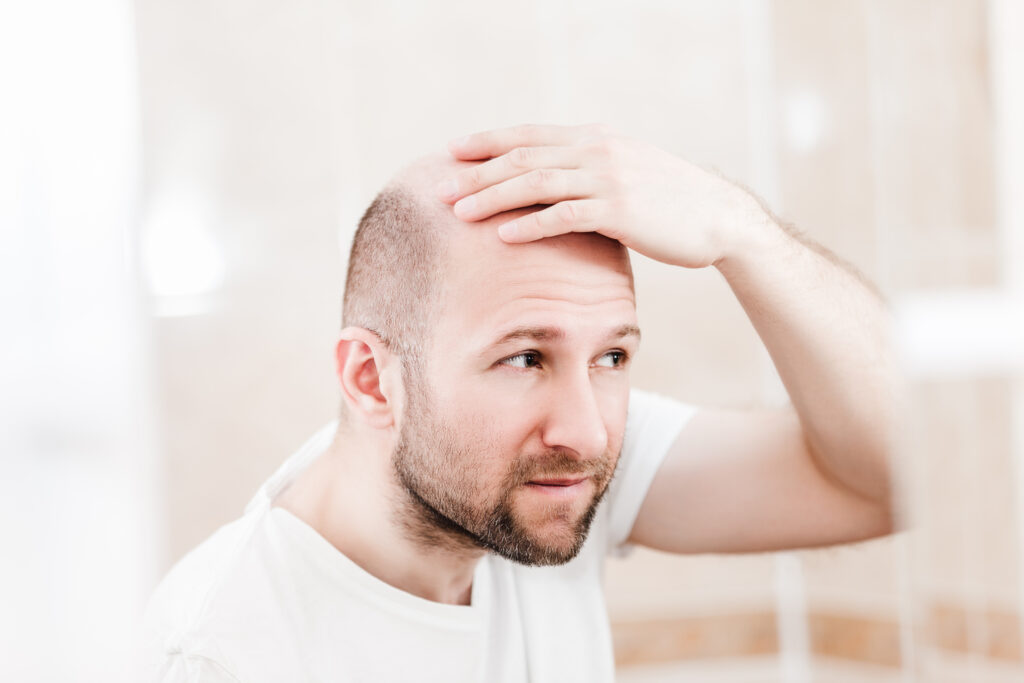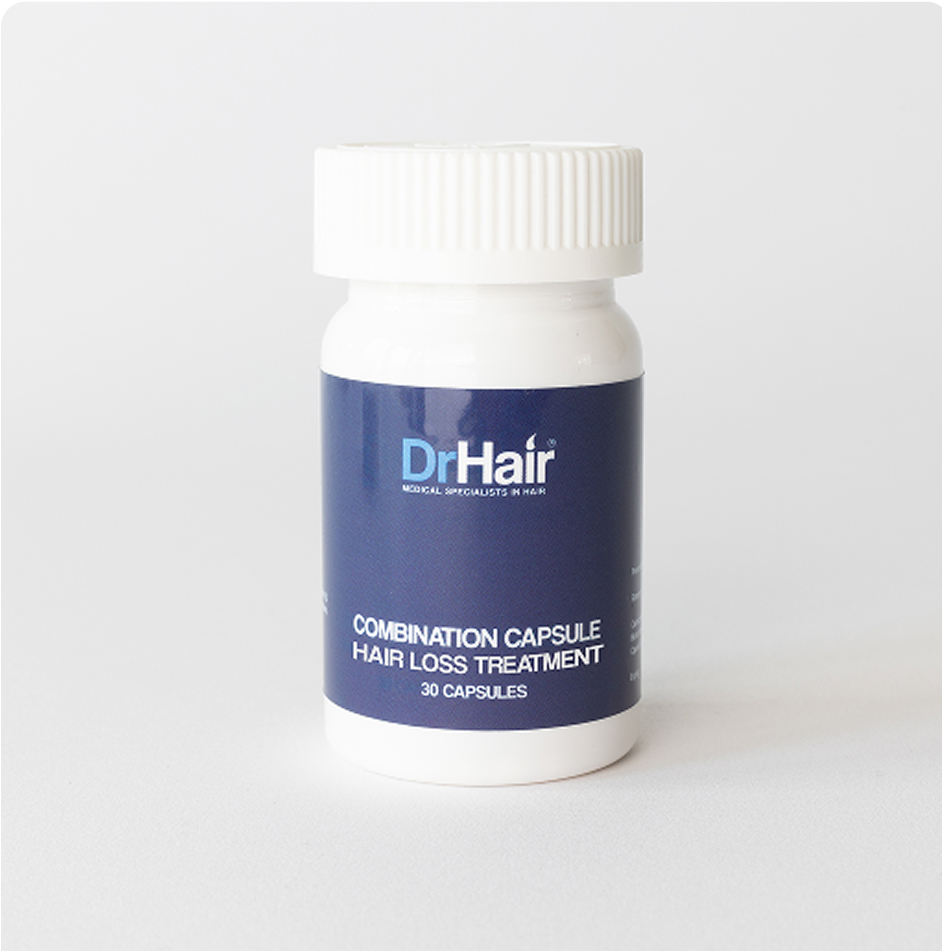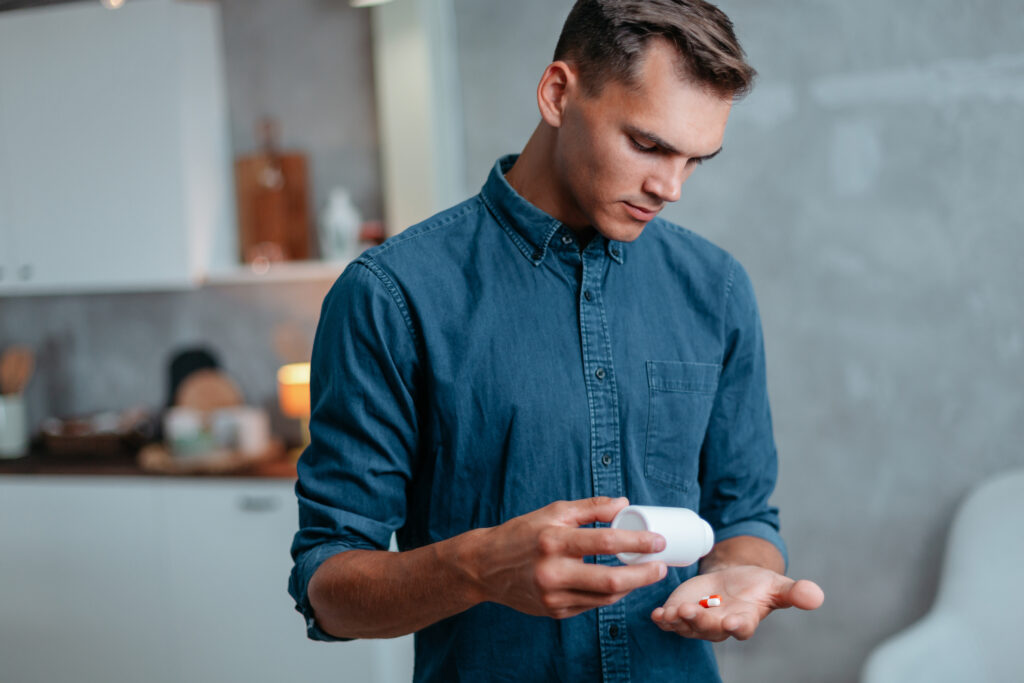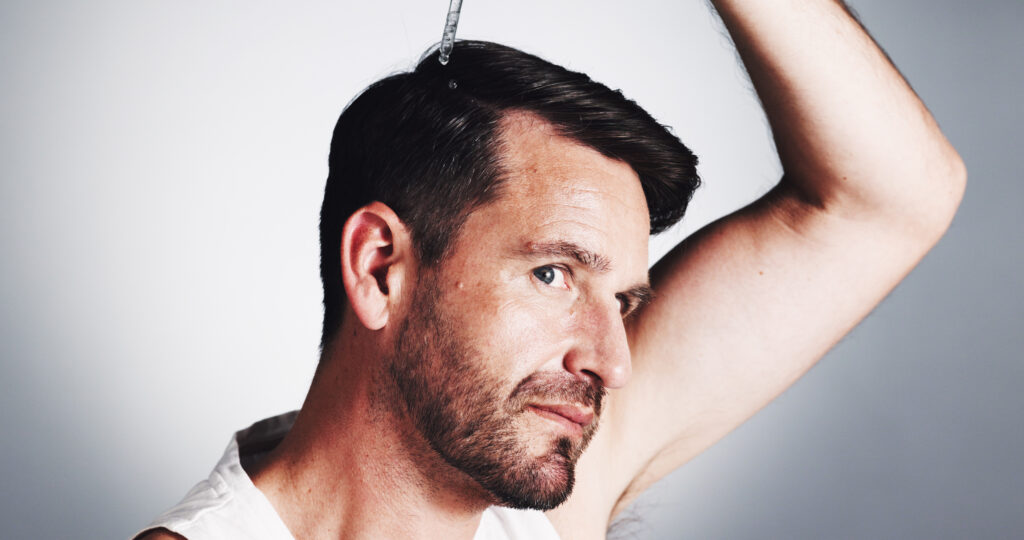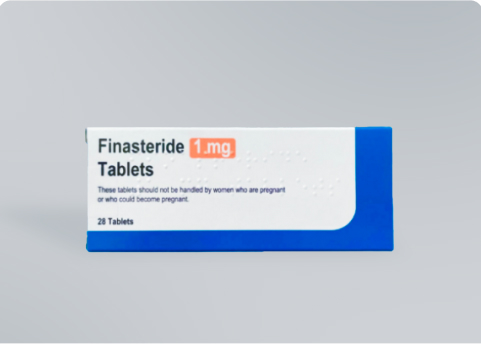If male pattern baldness concerns you, you’ve probably heard of finasteride. This is a popular and widely used medication for the treatment of male pattern baldness (otherwise known as androgenetic alopecia).
But can you take finasteride every other day? Are there any risks you need to be aware of? This article will discuss everything you need to know about changing your finasteride dose from a daily intake to an every-other-day usage.
It’s important that you have all the information you need regarding implications on efficacy, as well as the reality about side effects – does changing the dose really reduce their severity?
Read on to find out.
What is finasteride?
You may or may not be familiar with this hair loss drug, but either way, it’s always good to recap exactly what finasteride is so you can understand how it works in your body.
Finasteride is one of two drugs licensed to treat male pattern baldness. The other option is minoxidil, which is used topically, unlike finasteride, which is taken orally.
Each has its pros and cons, and you’ll need to decide which one works best for you – in conjunction with input from your healthcare professional.
Finasteride is a 5 alpha-reductase inhibitor. This sounds fancy, but all it means is that it blocks a specific type of enzyme in your body.
The enzyme in question is required to convert testosterone – your male sex hormone – into another hormone known as DHT, or dihydrotestosterone.
How do raised DHT levels cause male pattern baldness?
DHT is another male sex hormone (androgen), like testosterone. Despite its bad reputation for hair loss, DHT is actually very useful.
It plays an important role in fetal development in the mother’s womb, and helps to form typically male characteristics such as a deep voice or male sex organs.
But you can have too much of a good thing, especially as you get older. When levels of this hormone are elevated, your risk of male pattern baldness increases [1]. This is particularly true if your genetic variant makes you extra susceptible.
DHT has two adverse effects on your hair health as you age (if in excess). It both reduces the size of your hair follicles and shortens the duration of your hair growth cycle.
When combined, this can lead to receding hairlines and/or overall thinner hair.
Why might you want to take finasteride every other day?

Not everyone wants to take this medication on a daily basis. This can be due to lifestyle considerations, personal preference, or to reduce potential finasteride side effects [2].
It could also be that you’re simply trying to get more value for money from your finasteride prescription by making it last that little bit longer.
These are all valid considerations for taking finasteride every other day – just consider the following factors first.
What are the implications of taking finasteride every other day?
Before you start taking finasteride on an alternate daily basis, it’s important to understand the implications of altering the dosing schedule.
It may reduce efficacy
Finasteride only stays in the body for a fairly short period. This is because it is both metabolised and eliminated quickly due to its short half-life. In fact its half-life is reported to only be around 6-8 hours [4]. Therefore, if you go from taking this drug every day to every other day, you may not get such good results.
Everyday intake is required to keep your DHT levels low, so if you reduce the intake, you may notice less dramatic improvements. Some research has shown that after one dose of finasteride, your blood DHT levels can be reduced for as many as 4 days [5]. But more research is needed to show exactly how skipping doses regularly affects hair maintenance.
Taking finasteride every other day doesn’t mean it will stop working entirely, and if taking finasteride every other day better suits your lifestyle, then it is something you can consider in line with your medical expert. Just be realistic about outcomes in this instance.
Side effects may not reduce
It’s logical to assume that if you are taking finasteride less frequently, any side effects from finasteride should reduce as well. Unfortunately, clinical evidence is lacking – we simply do not have enough information to confirm this as yet.
But it’s important to remember that not everyone will get side effects with finasteride. Only some people experience associated symptoms such as decreased libido, erectile dysfunction, and other disorders [2].
There’s a lack of clinical evidence on alternative dosing
Because most people take finasteride on a daily basis, there has not been much investigation into the concept of taking the drug every other day. But, there has been at least one study looking at people taking finasteride every other month, not every other day [3].
This study investigated an every-other-month dosage on a therapeutic maintenance basis – i.e. once improvements have already been made, a reduced, alternative month dose could suffice. So this could be something to consider if you have already achieved favourable results and want to reduce your intake of finasteride.
How does finasteride work?

Finasteride works by reducing your levels of DHT.
By blocking activity of the aforementioned enzyme, less testosterone is converted into DHT, preventing your levels of this androgen from becoming elevated.
Taking just 1 mg of finasteride per day is shown to effectively reduce elevated DHT levels, thereby slowing hair loss. It even shows potential for promoting hair regrowth [1]. You are normally prescribed this drug to take on a once daily basis.
Finasteride is not only given by your doctor in instances of male pattern baldness – it can also be used when you have an enlarged prostate not caused by cancer.
Recommendations
If you’re considering adjusting your finasteride dosing schedule, it’s crucial to consult with a healthcare professional. They can provide personalised advice based on your medical history and treatment goals.
Adhering to the prescribed daily finasteride dosage is generally recommended to ensure optimal results in managing hair loss.
In summary, while taking finasteride every other day may seem like a viable option to reduce side effects or for convenience, current evidence suggests that daily dosing is more effective in maintaining consistent DHT suppression and achieving desired outcomes in hair loss treatment.
It might also be more beneficial for you to consider taking an alternative to oral finasteride, such as a topical product, if side effects are making you consider taking your dose less regularly.
Get the right hair loss treatment from DrHair
If you are looking for a personalised male pattern baldness treatment then you’re in safe hands with DrHair. With over 30 years of supplying online retailers and pharmacies with licensed hair loss treatments, including oral finasteride and topical finasteride with minoxidil, we can safely recommend our products to individual users to buy directly from us. It takes less than a minute for you to get assessed with us, and then you have access to a highly effective hair loss drug that can give you fantastic results. See our full range of hair loss products to find the best one for you.FAQS
Finasteride is usually prescribed to be taken daily, so if you intend to change the dosing it’s important to seek guidance from your healthcare practitioner. While finasteride is unlikely to be dangerous if taken every other day for hair loss purposes, it can render the drug less effective.
In general your finasteride dosage will vary depending on what you are taking it for. People taking this medication for an enlarged prostate will need to take a higher dose than those taking it for hair loss purposes. The recommended dose for male hair loss is 1 mg per day.
Finasteride is not the type of drug that needs to be taken alongside food – but it is recommended that you take finasteride at the same time every day for optimal efficacy. If you’re taking finasteride on alternate days, check with your doctor about the best schedule for you.


